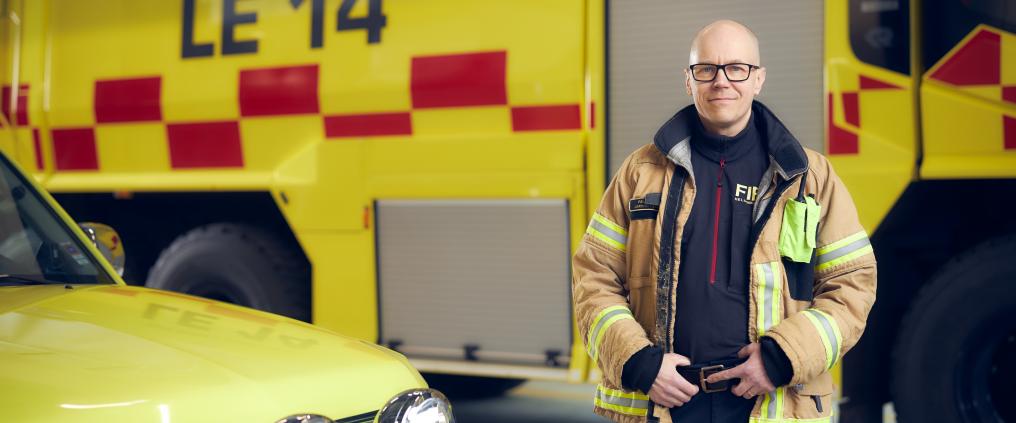“Back in 2005 I had two alternatives: to start a management class at the Rescue Institute, or to take a flight to Kabul and join the UN peacekeeping force at the airport’s rescue service. I chose education. At that time, I had worked as a fireman at Helsinki Airport for eight years.”
“I’ve been a firemaster for the past seven years. I make sure that during my shift, we are prepared for emergencies. A shift starts at 09:00 and ends at the same time the next morning. First, I meet with the firemen at the concourse, to go through the upcoming tasks on the schedule. Everyone checks the equipment and vehicles. I lead the alarm situations and routine tasks of the rescue service. Between those, I carry out different kinds of projects and administrative tasks and plan the daily rescue rehearsals.”
“My fellow workers are my biggest source of energy, but I guess I’m still a project person. Much of the time, I work quite independently. That’s counterbalanced by the rescue missions where we often get to give 100%. On average, we get about 3 to 8 alarms per day through the emergency exchange.”
“The airport is the best working environment I can think of. It’s international, versatile and communal. The rescue service work here is characterised by safety procedures, precise preparation and planes moving on the ground.”
“As shift workers, we have the possibility to change shifts with each other. That is the most important means of balancing work with everything else in life. When the employer is flexible, so are the employees. Finavia is a very family-friendly employer. In my free time, I like to cycle. I’m on my bike around 300 hours each year. While riding, I keep my phone on silent, and on vacations, I’m completely offline. Recovery is important, so I can work efficiently for the next 20 years as well.”
Here come the 37-tons "Panthers" - read more about the airport's rescue vehicles



